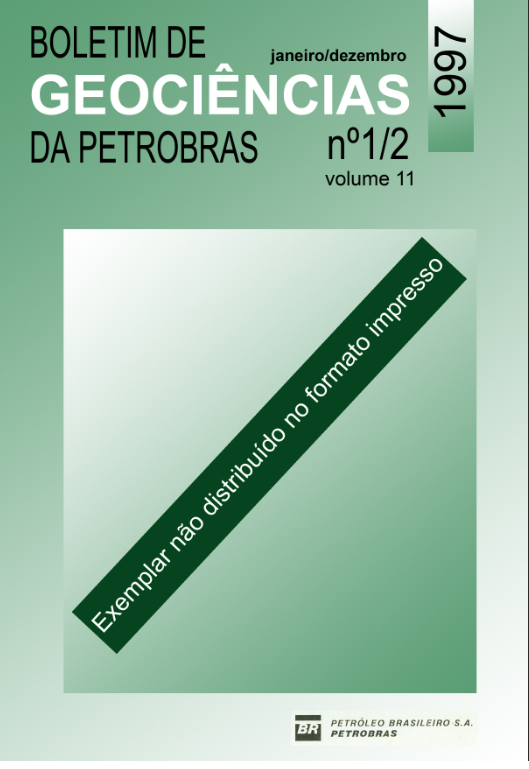NATURAL SERIES: PETROLEUM GENERATION AND EXPULSION ASSESSMENT AND OIL-KITCHENS MAPPING
Abstract
The study of natural series applied to petroleum source rocks consists of the integrated analysis of the behavior of geochemical parameters indicating petroleum generation and expulsion as a function of th’e depth and degree of maturation. It is possible to define the location and extension of the oil-kitchen(s) of an oil system with greater accuracy. Data from routine analyses of total organic carbon (TOC), Rock-Eval pyrolysis and organic petrography (vitrinite reflectance) are used. The interpretation of this data and the resulting geochemical parameters are shown in a summarized form. The theoretical behavior of this data with increasing maturation is discussed, together with the applications and limitations of the study of natural series. The use of this method is exemplified by two studies applied to source rocks in Brazilian basins: 1) Early Cretaceous lacustrine shales occurring in a basin on the east coast, and 2) Albian-Cenomanian marine shales located in a marginal basin in the northeast. In both cases, a joint analysis of the data enabled the definition of the top of the generation window at the depth from which the TOC values, source potential and hydrogen index started to fall, while the production index (PI) and transformation rate (TT) values begun to rise. The depth of the onset of the expulsion process was defined as being the one where the PI and TT curves diverge. The maturation level (Ro% and Tmax) was also determined corresponding to the onset of petroleum generation and expulsion in each source rock.
Downloads
Published
Issue
Section
License
Copyright (c) 1997 Boletim de Geociências da Petrobras

This work is licensed under a Creative Commons Attribution 4.0 International License.
This license enables reusers to distribute, remix, adapt, and build upon the material in any medium or format, so long as attribution is given to the creator. The license allows for commercial use.



